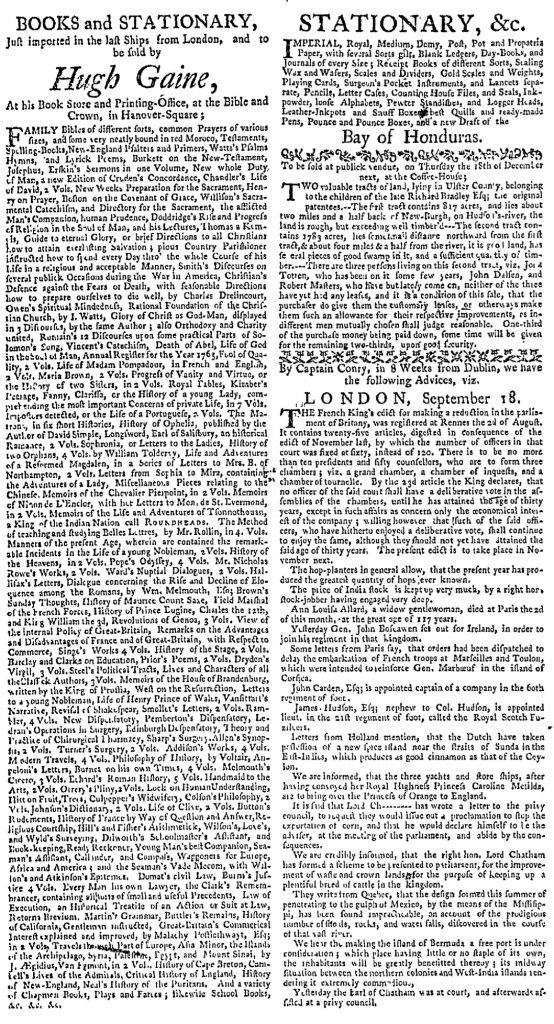What was advertised in a colonial American newspaper 250 years ago this week?

“News Carrier.”
John Green and Joseph Russell, printers of the Massachusetts Gazette and Boston Post-Boy, had more content than would fit in the June 3, 1771, edition of their newspaper. They inserted a note advising that “Advertisements omitted, will be in our next.” Even with limited space, advertising accounted for the entire final page as well as half a column on the third page. The printers also managed to squeeze one advertisement each on the first and second pages. In so doing, they selected advertisements that promoted their own endeavors.
The front page consisted almost entirely of news about “the Gentlemen, who were returned to serve as Members of the Honorable House of Representatives” for the colony as well as the “Gentlemen … elected Councellors for the Ensuing Year.” A single advertisement, however, ran across the bottom of the page. In it, Silent Wilde, “News Carrier,” advised current and prospective customers that he would continue to “ride once every Week from Boston to Northampton,Deerfield,” and other towns in the western portion of the colony in order “to supply Gentlemen … with one of the Boston News-Papers.” Green and Russell had a particular interest in publishing Wilde’s advertisement since recruiting customers in western towns meant more subscribers for their newspaper. In turn, greater circulation of the Massachusetts Gazette and Boston Post-Boy made the publication more attractive to advertisers. Green and Russell gave Wilde’s advertisement a privileged place, increasing the likelihood that readers would take note of it.
An advertisement at the bottom of the last column on the second page similarly advanced Green and Russell’s interests. “J. RUSSELL, Auctioneer,” announced a sale “at the Auction Room in Queen-street” scheduled for the next day. That “J. RUSSELL” was none other than Joseph Russell, the printer of the Massachusetts Gazette and Boston Post-Boy. Throughout most of their partnership, Green oversaw the printing office while Russell operated an auction house. Advertisements for Russell’s auctions frequently appeared in the newspaper his partner ran, often receiving special consideration in terms of placement. In most instance, that meant they appeared first among the advertisements. In this case, Green interspersed Russell’s advertisement among news items, making sure to find space for it while also increasing the likelihood that readers who otherwise passed over advertising would spot the notice when they perused the news.
The placement and order of other advertisements in the newspaper did not seem to follow any particular principle beyond forming columns of equal length. Advertisements for a “News Carrier” and an “Auction Room” owned by the partners who printed the Massachusetts Gazette and Boston Post-Boy, on the other hand, received special treatment. The printers used their position to their advantage when choosing how to present those advertisements to readers.



